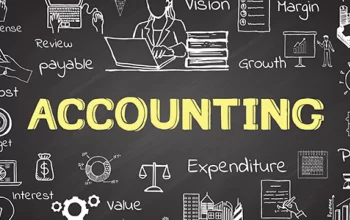When a buyer purchases an existing business, goodwill is an intangible asset. The value of goodwill is generally intangible because it represents assets that are not separate from the business. There are a few key differences between accounting goodwill and other intangible assets. Let’s discuss the difference and how to calculate it. Ultimately, the amount of goodwill will determine whether a business is worth keeping or selling. Let’s look at some common accounting mistakes to avoid.
Before 2001, private companies could amortize goodwill over 40 years. Many companies took advantage of the maximum amortization period, as it neutralized the periodic earnings effect. Instead, they reported supplementary cash earnings to offset the periodic earnings effect. Then, in 2001, the FASB changed the rules. Since then, private companies can amortize goodwill over ten years or a shorter period if they so choose. During this time, they do not need to perform an annual impairment test to determine if the goodwill is still valuable, or if a triggering event has occurred.
Another common mistake in accounting is ignoring impairment of goodwill. Goodwill is intangible, and its fair value can change quickly. This is why management is responsible for evaluating the value of goodwill each year, and for determining whether impairment is necessary. In most cases, goodwill is not a standalone asset, but rather is part of a larger group of assets called a “cash-generating unit.” Any changes in the fair market value of goodwill must be recognized in the financial statements.
The FASB also discussed a post-implementation review of the IASB’s standards regarding accounting for goodwill. Although the board did not come to a conclusion, it directed staff to carry out additional research. FASB staff also identified an appropriate useful life for goodwill amortization and a simplified goodwill impairment test. Finally, the board added two projects to its agenda in 2015.
Another mistake many people make is assuming that a business’ goodwill will depreciate over time. This is a mistake that can affect the bottom line. While accounting for goodwill is a very important part of preparing a balance sheet, it is not a standalone asset. In fact, goodwill is a crucial component to a business’s future success. It can be difficult to determine the value of an intangible asset without an appraisal.
The accounting for goodwill remains a controversial topic. The current practice is to revalue companies’ assets based on estimates of future cash flows, price negotiations, and other factors. By doing this, accountants compensate for the differences between a company’s reported assets and its true value. The result is a mismatch between reported assets and net income, which is a major cause for concern among investors. As such, the accounting of goodwill is more important than ever before.
Goodwill can be difficult to calculate because it depends on future cash flows and costs. However, this is difficult to predict in an uncertain business climate. Nevertheless, many investors and analysts have found it useful to track goodwill over time. If goodwill is not properly valued, it signals that the acquisition was a failure and that wealth has been lost. The objective of accounting for goodwill is to maximize its value. That’s why it is so important to know how to calculate goodwill correctly.









